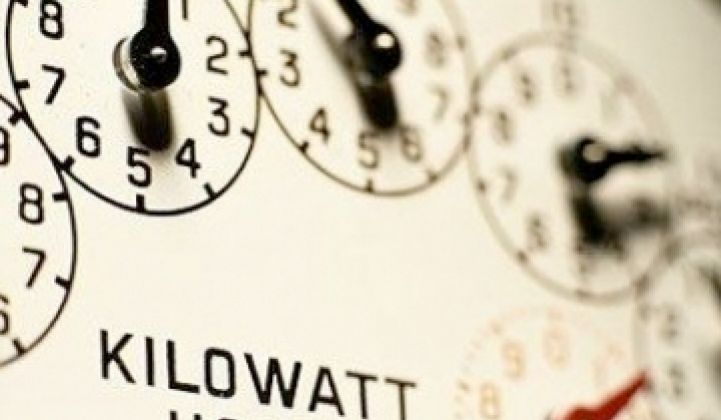A cutting-edge incentive program is the way California can meet its need for renewable energy while bringing enormous financial benefits to the state and adding jobs by the thousands.
According to the study "Economic Benefits of a Comprehensive Feed-In Tariff: An Analysis of the REESA in California," conducted by Dan Kammen and Max Wei of the University of California, Berkeley's Renewable and Appropriate Energy Laboratory Energy and Resources Group, a well-designed feed-in tariff (FiT) like the one in pending state legislation will bring California $2 billion in additional tax revenue and $50 billion in new investment, while adding an average of 50,000 new jobs a year for a decade.
In addition, the study found the FiT is the best way California can drive the renewable energy capacity growth it urgently needs to meet its newly mandated standard of 33 percent renewable electricity by 2020.
The study evaluated the performance of the FiT proposed in the Renewable Energy and Economic Stimulus Act (REESA). It would create an above-retail rate of return (tariff) for every kilowatt-hour of electricity renewables that developers "feed in" to the California power grid from projects of between one and twenty megawatts in capacity.
Dan Kammen, the study's lead author and one of the foremost renewable energy authorities in the U.S., says a FiT is the right move for California. "What we found in the study is that in terms of cost- and carbon-effective programs to create green jobs and to spur a new component of the renewable energy industry, feed-in tariffs have a real advantage."
The state's ambitious new Renewable Electricity Standard (RES) is driving utilities to build large-scale projects. The "million solar roofs" California Solar Initiative is driving growth in residential rooftop solar. The REESA's FiT is aimed at investors in projects bigger than a residential rooftop and smaller than a utility-scale wind project or solar power plant.
"The feed-in tariff can fill that gap," Kammen explained. "That's a really important thing to do because it would help to diversify the number of companies, homes and businesses that could do clean energy generation. That is by definition going to be a large jobs generator."
Solar installations on big-box businesses and apartment building rooftops and in non-viable urban open spaces, industrial combined heat and power, and waste heat management projects would all instantly become viable investments, especially because they are likely to have ready access to the grid without the need for new transmission.
"The FiT does bring a whole new sector into play," Kammen said.
Craig Lewis, Executive Director of the FIT Coalition, which authored the REESA, said a FiT is urgently needed because California has to find new ways to meet its mandates. The scale of the challenge, Lewis explained, is daunting.
"We have to do things differently," Lewis said. "Eight years ago when the [twenty percent renewables standard for 2010] was established, we were already at fourteen percent and today we are at fifteen percent. Over eight years, we've moved up one percentage point." He added: "To satisfy our twenty percent by the end of this year is an additional fifteen gigawatts....Our run-rate at getting renewables on-line is less than ten percent of what we were supposed to be doing. The task of getting to 33 percent by 2020 from where we are today is equivalent to 40 gigawatts. We just passed over the one gigawatt mark and we're supposed to get to 40 gigawatts in the next ten years. That's four gigawatts per year -- which is four times more than we have cumulatively brought on over the last eight years."
This ambitious target seems nothing short of impossible, especially in such tough economic times. However, according to the new study, the REESA FiT, if passed, would not only be the fastest way to meet the 2010 and 2020 mandates, but would also be an economic boon to the state.
Kammen said there are two very good reasons why investors will take advantage of the opportunity offered by the REESA FiT. "One is that companies can already generate energy in that scale," he said. "The business opportunity to generate energy is very high but without something to fill that gap that gives long-term certainty, companies wouldn't do it."
The second reason is the FiT's two-decade-long guaranteed return. "If a company needs to raise the money itself or go get bank financing, that long-term certainty is the key," he said. "We have 15 country examples in Europe that have done very well with feed-in tariffs."
The rap against the FiT has always been that utility ratepayers would foot the bill for the higher prices paid to renewable energy producers. But the FIT Coalition's Lewis said their REESA was conservatively crafted so that the utility's ratepayers will not bear a significant burden. "Over the first two years, they will be paying a little more," Lewis explained. "The cumulative impact of that will be less than one percent on the ratepayer's bill in total." But from year three on, the ratepayer begins saving money. At the end of the 10-year program, in 2020, when we fulfill the entire 33 percent requirement, the ratepayer savings is cumulatively five percent."
The study has demonstrated the FiT's economic viability so the remaining question is whether the state legislature will step up. "I think it's actually quite viable," Kammen said of the REESA's political chances. "I'm actually pretty confident that California is all set up to do it right. This is ripe for action."



